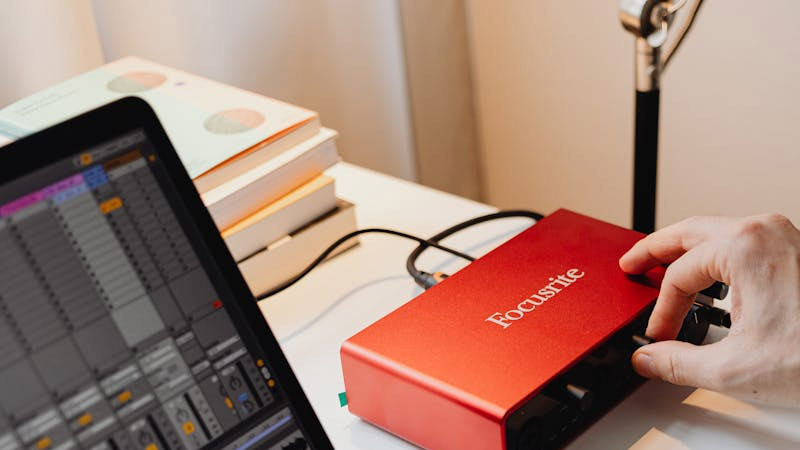What Are the Notable Website Design Trends to Watch in 2026?
2025 / 10 / 10
In an era of increasing homogenization of internet products, website design has evolved from mere visual presentation to a core battleground for user experience. So, with rapid technological advancements and continuous shifts in user behavior, what groundbreaking transformations will define website design in 2026?
According to Arachne Group Limited, the trends will revolve around three core principles: "Hyper-Personalization," "Immersive Experience," and "Accessibility," all while integrating technological innovation and human-centric care. Let's delve into the top ten design directions worth monitoring, empowering businesses to seize opportunities and create more attractive and competitive digital spaces.
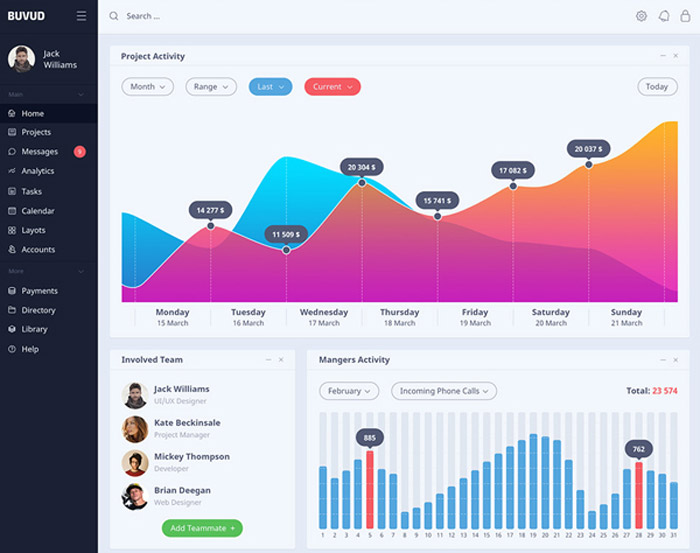
Remember those monotonous, number-and-chart-filled dashboards? By 2026, through the deep integration of AI and UX design, these traditional, control-panel-like dashboards will become obsolete, transforming into genuine "personal life coaches."
These intelligent dashboards will leverage user behavior data, preferences, and even emotional indicators to deliver dynamic content that truly aligns with immediate needs. This signifies that if a website's design still adheres to a "one-size-fits-all" approach, users will quickly migrate to competitors who understand them better.
Engaging Micro-interactions: Magical Moments in the Details
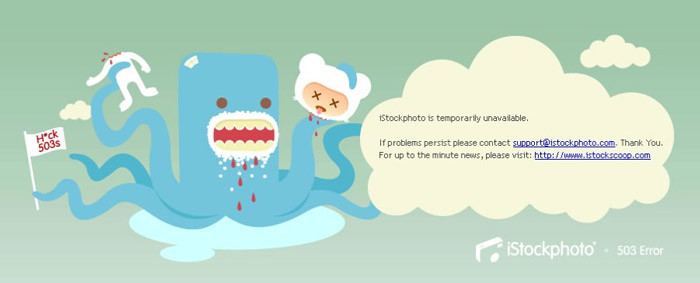
Micro-interaction design has transcended its niche status, becoming essential infrastructure within user experience. What was once an "extra surprise" for users is now evolving into a "basic expectation."
Incorporating subtle animations and context-aware sound design can infuse user operations with emotional warmth and playful engagement. This design approach not only enhances user delight but also effectively boosts participation by strengthening operational feedback mechanisms.
However, designing micro-interactions requires a careful balance between fun and functionality: overly decorative animations can distract users, while uncreative designs lead to mediocre experiences. Therefore, micro-interactions should be dynamically adjusted based on the user's context (e.g., urgent task completion, casual browsing) to ensure each interaction precisely meets user needs and delivers an optimally calibrated experience.
Brutalism Revival: Rebellious Aesthetics Breaking Refinement
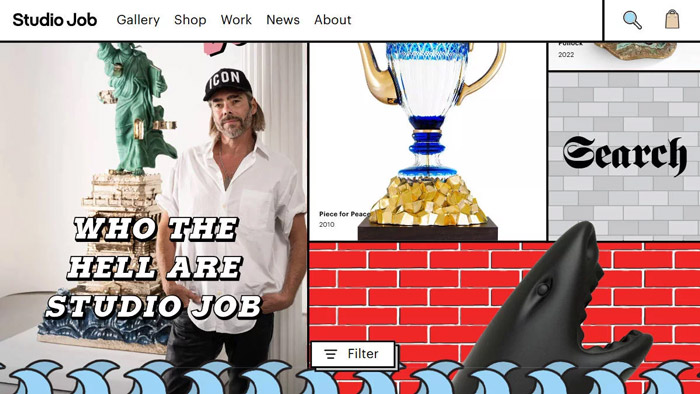
As minimalist design gradually loses its visual impact, Brutalism is making a comeback with its philosophy of "intentionally retaining imperfections." This seemingly unconventional style stands out amidst uniform, polished designs, creating strong visual identity and memorability.
Hallmarks of Brutalism include large color blocks, high-contrast palettes, unconventional candy-color mixes, and oversized headlines. These seemingly crude elements actively capture user attention through anti-traditional visual language. This design approach is not a rejection of aesthetic principles but an active exploration of diverse design expression, aiming to provide users with a more impactful visual experience.
Adaptive Color Palettes: Intelligent Interfaces That Shift with Mood
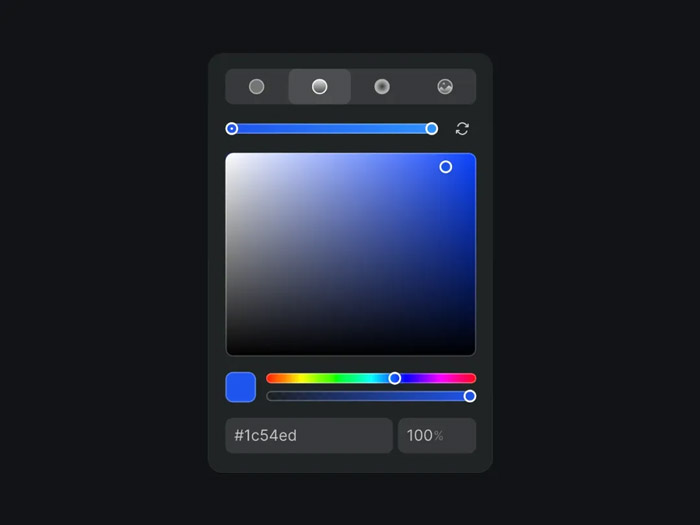
By 2026, website interfaces will intelligently adapt their color schemes based on the user's current emotional state, time of day, or even behavior patterns. For instance, if the system detects user stress, the interface might switch to calming blue tones; when focus is needed, it could shift to high-saturation, energizing colors to boost productivity.
This dynamic color system serves not just an aesthetic function but also an emotional communication role—using color psychology principles to effectively alleviate user stress and optimize workflow. This demands designers master multi-dimensional color system coordination for smooth transitions across scenarios, while ensuring visual consistency and brand recognition are maintained throughout the dynamic changes.
Voice-First Interfaces: Evolution from Clicking to Conversing
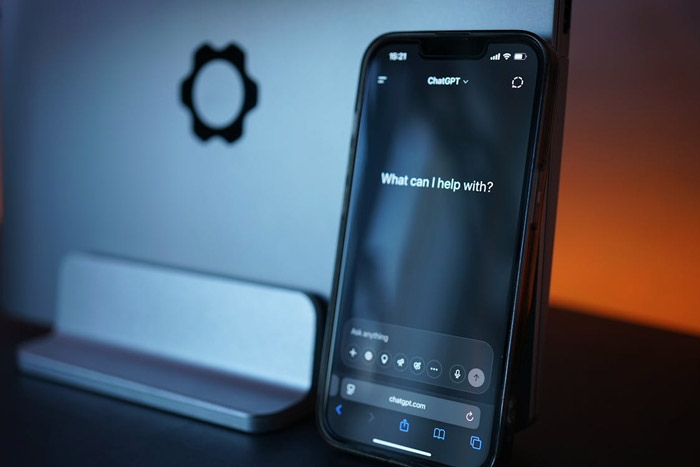
By 2026, voice interaction technology will move beyond simple wake words (like "Hey Siri"), becoming deeply integrated into navigation, command execution, and complex multi-turn dialogues. For example, a user could simply command: "Show me flight options to Tokyo departing next Friday," and the system would instantly present matching results.
This requires designers to refactor interaction frameworks, systematically plan multi-turn dialogue logic, design error tolerance and correction mechanisms, and seamlessly integrate voice feedback with visual interfaces. If voice interaction isn't yet a core consideration in your design process, now is the ideal time to initiate systematic optimization.
3D and Holographic Elements: Crafting Immersive Spatial Experiences
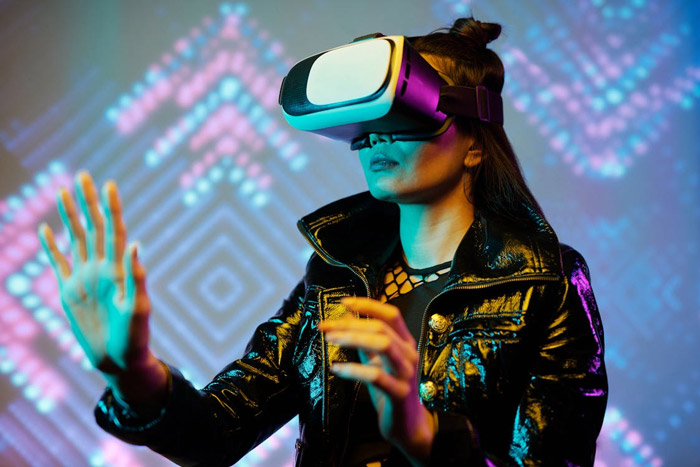
Following the waning trend of flat design, we are now witnessing a renaissance of 3D elements. Leveraging depth of field for spatial perception, dynamic shadows for realistic lighting, and floating cards for visual lightness, website interfaces will break free from traditional two-dimensional constraints, offering unprecedented layers and vibrancy.
Furthermore, through meticulously crafted interactive details—such as natural tilting physics when dragging elements or spatial parallax effects during scrolling—these subtle dynamic enhancements significantly deepen user immersion.
From 3D product visualization to spatial data representation, 3D design elements present content more intuitively and vividly. This is particularly applicable for e-commerce product displays, visualizing abstract concepts in educational platforms, and creating immersive portfolios for creative professionals.
Invisible Interfaces: When Technology Anticipates Needs
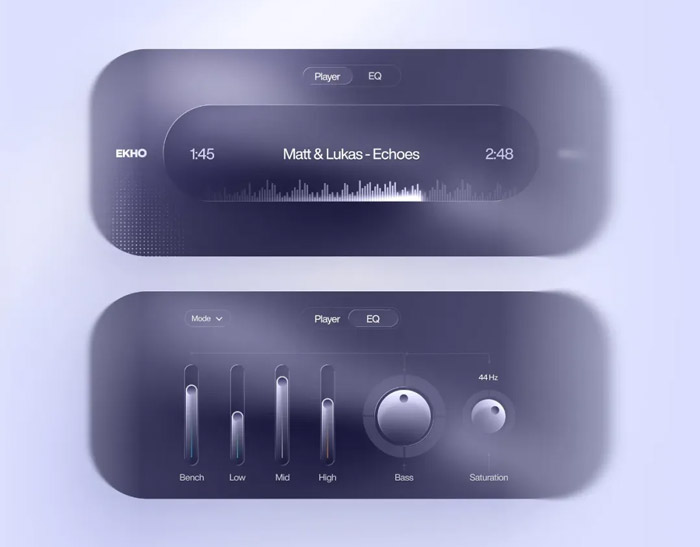
In stark contrast to the pursuit of ornate visuals, the "Invisible Interface" philosophy is gaining traction. Through deep integration of auto-save functionality, intelligent content suggestion systems, and context-aware technology, website interfaces will reduce explicit control elements, evolving into intelligent digital assistants capable of accurately predicting user needs.
This "subtractive design" philosophy pursues ultimate simplicity and operational efficiency. Its core challenge lies in gracefully handling interaction errors caused by prediction algorithm inaccuracies, while ensuring "invisible" doesn't equate to "lack of feedback." Successful invisible interfaces use subtle interactive feedback to make users feel assisted rather than confused, enabling efficient task completion almost unnoticed.
Motion-First Layouts: Bringing Experience to Life
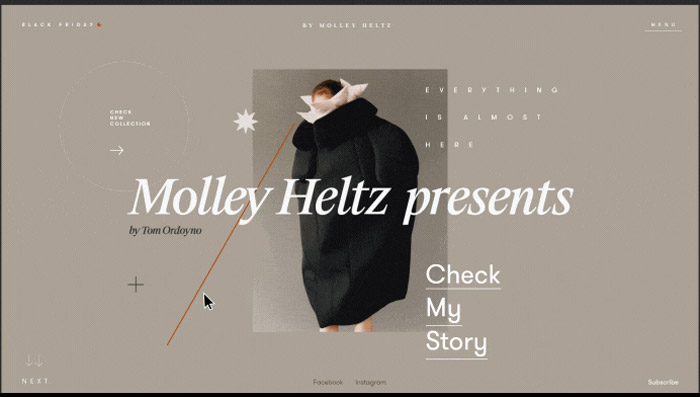
Animation is undergoing a paradigm shift from visual decoration to core interaction language. By 2026, we will witness more interface layouts driven primarily by motion design—seamless tab transitions, elegant spatial transformations during card reorganization, and dynamic growth animations for data visualizations. These meticulously designed motions will become key touchpoints for enhancing user experience.
These choreographed dynamics not only add delight to user operations but also reinforce information hierarchy and explain functional logic through visual guidance. This trend demands that designers master animation principles like motion curves and timing, or collaborate closely with professional motion designers, to ensure every interactive detail accurately conveys the design intent.
Accessibility Design: The Inevitable Evolution from Optional to Standard
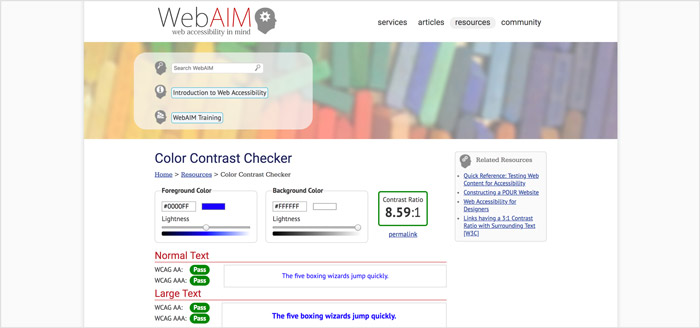
By 2026, accessible design will become a fundamental, non-negotiable standard for all websites. Cognitively sound color contrast ratios, comfortable text size guidelines, comprehensive keyboard navigation systems, and voice interaction compatibility will transition from "optional bonuses" to foundational architectural requirements in product development.
It's crucial to emphasize that accessibility design, by optimizing information delivery efficiency and interaction logic, often creates a clearer, more efficient universal experience for all users, thereby boosting overall satisfaction. Companies neglecting this principle risk not only alienating specific user groups but also damaging their brand image due to usability flaws, placing them at a competitive disadvantage.
Ubiquitous Design Systems: The Ultimate Solution for Efficiency and Consistency
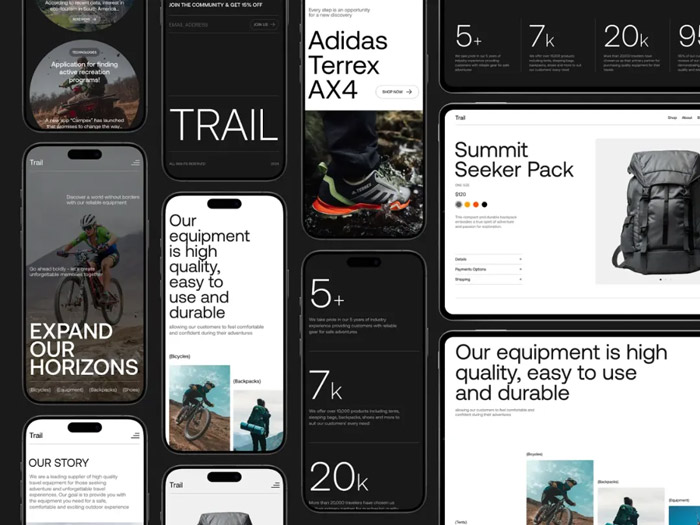
The evolution of design systems will transcend traditional component libraries, growing into comprehensive design frameworks covering entire user journeys. From onboarding flows and personalized account settings to payment transactions, these high-frequency interaction modules can utilize standardized solutions directly from the design system, eliminating resource waste from redundant development.
This shift allows design teams to focus their energy on innovative experience design and core feature optimization, rather than inefficient repetitive tasks. A mature, systematic design framework not only significantly boosts development efficiency but also, through unified design language and interaction patterns, ensures consistent experiences across different devices and scenarios, building a solid digital experience foundation for the brand.
The website design trends of 2026 collectively point towards a smarter, more humanized, and more immersive future. From hyper-personalized content to accessible inclusivity, these changes represent not just technological progress, but a deeper practice of human-centered design philosophy.
At Arachne Group Limited, we remain at the forefront of design trends, assisting clients in building future-ready websites that balance aesthetics and functionality. Our strengths include:
Forward-Looking Planning: We don't just follow trends; we anticipate them, ensuring your website possesses long-term competitiveness.
Balancing Technology and Aesthetics: We master the latest technologies while adhering to a user-experience-centric design philosophy.
Comprehensive Accessible Design: From project inception, we integrate accessibility standards into every design decision.
Customized Design Systems: We build tailored design systems for each client, ensuring brand consistency and scalability.
Ready to embrace the digital challenges of 2026? Let us help you create the next trend-leading, exceptional website.
According to Arachne Group Limited, the trends will revolve around three core principles: "Hyper-Personalization," "Immersive Experience," and "Accessibility," all while integrating technological innovation and human-centric care. Let's delve into the top ten design directions worth monitoring, empowering businesses to seize opportunities and create more attractive and competitive digital spaces.
What Are the Notable Website Design Trends to Watch in 2026?
Hyper-Personalized Dashboards: From Cold Data to Personal Coach
Remember those monotonous, number-and-chart-filled dashboards? By 2026, through the deep integration of AI and UX design, these traditional, control-panel-like dashboards will become obsolete, transforming into genuine "personal life coaches."
These intelligent dashboards will leverage user behavior data, preferences, and even emotional indicators to deliver dynamic content that truly aligns with immediate needs. This signifies that if a website's design still adheres to a "one-size-fits-all" approach, users will quickly migrate to competitors who understand them better.
Engaging Micro-interactions: Magical Moments in the Details

Micro-interaction design has transcended its niche status, becoming essential infrastructure within user experience. What was once an "extra surprise" for users is now evolving into a "basic expectation."
Incorporating subtle animations and context-aware sound design can infuse user operations with emotional warmth and playful engagement. This design approach not only enhances user delight but also effectively boosts participation by strengthening operational feedback mechanisms.
However, designing micro-interactions requires a careful balance between fun and functionality: overly decorative animations can distract users, while uncreative designs lead to mediocre experiences. Therefore, micro-interactions should be dynamically adjusted based on the user's context (e.g., urgent task completion, casual browsing) to ensure each interaction precisely meets user needs and delivers an optimally calibrated experience.
Brutalism Revival: Rebellious Aesthetics Breaking Refinement

As minimalist design gradually loses its visual impact, Brutalism is making a comeback with its philosophy of "intentionally retaining imperfections." This seemingly unconventional style stands out amidst uniform, polished designs, creating strong visual identity and memorability.
Hallmarks of Brutalism include large color blocks, high-contrast palettes, unconventional candy-color mixes, and oversized headlines. These seemingly crude elements actively capture user attention through anti-traditional visual language. This design approach is not a rejection of aesthetic principles but an active exploration of diverse design expression, aiming to provide users with a more impactful visual experience.
Adaptive Color Palettes: Intelligent Interfaces That Shift with Mood

By 2026, website interfaces will intelligently adapt their color schemes based on the user's current emotional state, time of day, or even behavior patterns. For instance, if the system detects user stress, the interface might switch to calming blue tones; when focus is needed, it could shift to high-saturation, energizing colors to boost productivity.
This dynamic color system serves not just an aesthetic function but also an emotional communication role—using color psychology principles to effectively alleviate user stress and optimize workflow. This demands designers master multi-dimensional color system coordination for smooth transitions across scenarios, while ensuring visual consistency and brand recognition are maintained throughout the dynamic changes.
Voice-First Interfaces: Evolution from Clicking to Conversing

By 2026, voice interaction technology will move beyond simple wake words (like "Hey Siri"), becoming deeply integrated into navigation, command execution, and complex multi-turn dialogues. For example, a user could simply command: "Show me flight options to Tokyo departing next Friday," and the system would instantly present matching results.
This requires designers to refactor interaction frameworks, systematically plan multi-turn dialogue logic, design error tolerance and correction mechanisms, and seamlessly integrate voice feedback with visual interfaces. If voice interaction isn't yet a core consideration in your design process, now is the ideal time to initiate systematic optimization.
3D and Holographic Elements: Crafting Immersive Spatial Experiences

Following the waning trend of flat design, we are now witnessing a renaissance of 3D elements. Leveraging depth of field for spatial perception, dynamic shadows for realistic lighting, and floating cards for visual lightness, website interfaces will break free from traditional two-dimensional constraints, offering unprecedented layers and vibrancy.
Furthermore, through meticulously crafted interactive details—such as natural tilting physics when dragging elements or spatial parallax effects during scrolling—these subtle dynamic enhancements significantly deepen user immersion.
From 3D product visualization to spatial data representation, 3D design elements present content more intuitively and vividly. This is particularly applicable for e-commerce product displays, visualizing abstract concepts in educational platforms, and creating immersive portfolios for creative professionals.
Invisible Interfaces: When Technology Anticipates Needs

In stark contrast to the pursuit of ornate visuals, the "Invisible Interface" philosophy is gaining traction. Through deep integration of auto-save functionality, intelligent content suggestion systems, and context-aware technology, website interfaces will reduce explicit control elements, evolving into intelligent digital assistants capable of accurately predicting user needs.
This "subtractive design" philosophy pursues ultimate simplicity and operational efficiency. Its core challenge lies in gracefully handling interaction errors caused by prediction algorithm inaccuracies, while ensuring "invisible" doesn't equate to "lack of feedback." Successful invisible interfaces use subtle interactive feedback to make users feel assisted rather than confused, enabling efficient task completion almost unnoticed.
Motion-First Layouts: Bringing Experience to Life

Animation is undergoing a paradigm shift from visual decoration to core interaction language. By 2026, we will witness more interface layouts driven primarily by motion design—seamless tab transitions, elegant spatial transformations during card reorganization, and dynamic growth animations for data visualizations. These meticulously designed motions will become key touchpoints for enhancing user experience.
These choreographed dynamics not only add delight to user operations but also reinforce information hierarchy and explain functional logic through visual guidance. This trend demands that designers master animation principles like motion curves and timing, or collaborate closely with professional motion designers, to ensure every interactive detail accurately conveys the design intent.
Accessibility Design: The Inevitable Evolution from Optional to Standard

By 2026, accessible design will become a fundamental, non-negotiable standard for all websites. Cognitively sound color contrast ratios, comfortable text size guidelines, comprehensive keyboard navigation systems, and voice interaction compatibility will transition from "optional bonuses" to foundational architectural requirements in product development.
It's crucial to emphasize that accessibility design, by optimizing information delivery efficiency and interaction logic, often creates a clearer, more efficient universal experience for all users, thereby boosting overall satisfaction. Companies neglecting this principle risk not only alienating specific user groups but also damaging their brand image due to usability flaws, placing them at a competitive disadvantage.
Ubiquitous Design Systems: The Ultimate Solution for Efficiency and Consistency

The evolution of design systems will transcend traditional component libraries, growing into comprehensive design frameworks covering entire user journeys. From onboarding flows and personalized account settings to payment transactions, these high-frequency interaction modules can utilize standardized solutions directly from the design system, eliminating resource waste from redundant development.
This shift allows design teams to focus their energy on innovative experience design and core feature optimization, rather than inefficient repetitive tasks. A mature, systematic design framework not only significantly boosts development efficiency but also, through unified design language and interaction patterns, ensures consistent experiences across different devices and scenarios, building a solid digital experience foundation for the brand.
The website design trends of 2026 collectively point towards a smarter, more humanized, and more immersive future. From hyper-personalized content to accessible inclusivity, these changes represent not just technological progress, but a deeper practice of human-centered design philosophy.
At Arachne Group Limited, we remain at the forefront of design trends, assisting clients in building future-ready websites that balance aesthetics and functionality. Our strengths include:
Forward-Looking Planning: We don't just follow trends; we anticipate them, ensuring your website possesses long-term competitiveness.
Balancing Technology and Aesthetics: We master the latest technologies while adhering to a user-experience-centric design philosophy.
Comprehensive Accessible Design: From project inception, we integrate accessibility standards into every design decision.
Customized Design Systems: We build tailored design systems for each client, ensuring brand consistency and scalability.
Ready to embrace the digital challenges of 2026? Let us help you create the next trend-leading, exceptional website.
MORE BLOG
-
Do Individual Studios Need a Website? Sharing Five Key Areas of Web Development and Online Promotion Focus
2025/12/03 This requires entrepreneurs to consider creating a professional website and developing an effective online promotion strategy to ensure their individual studio stands out in a competitive market. -
Web Development + Digital Marketing: Crafting Thanksgiving & Black Friday Campaigns That Drive Record Profits for Businesses
2025/11/21 As your professional partner in web development and digital marketing, Arachne Group Limited understands that a successful holiday campaign is far more than just offering "discounts." -
What Are Web Development and Web Design? The Two Pillars of Building Successful Web Solutions
2025/11/19 Transforming it into a functional, live website requires a series of complex conversion processes, including writing code, setting up databases, and building backend functionalities.













